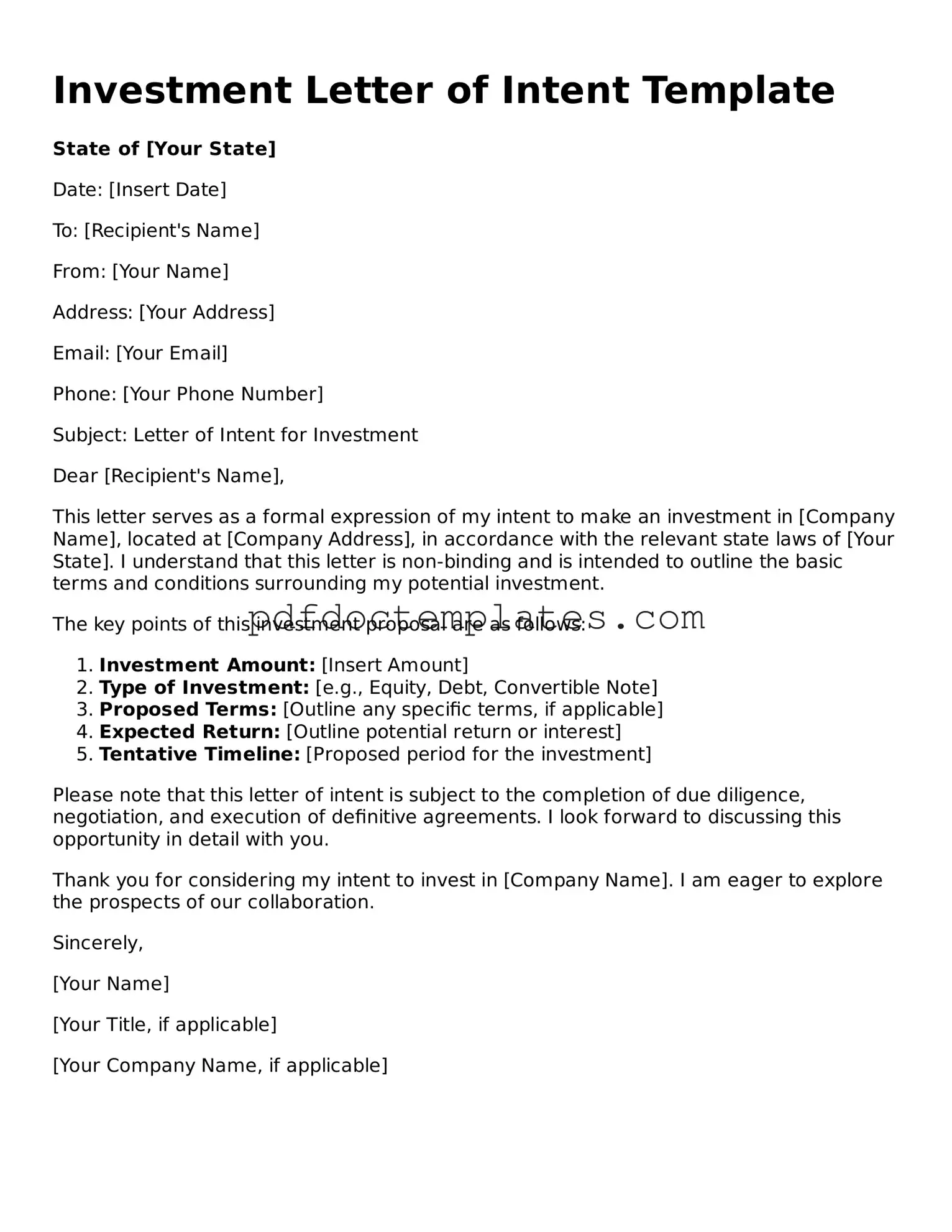Investment Letter of Intent Template
State of [Your State]
Date: [Insert Date]
To: [Recipient's Name]
From: [Your Name]
Address: [Your Address]
Email: [Your Email]
Phone: [Your Phone Number]
Subject: Letter of Intent for Investment
Dear [Recipient's Name],
This letter serves as a formal expression of my intent to make an investment in [Company Name], located at [Company Address], in accordance with the relevant state laws of [Your State]. I understand that this letter is non-binding and is intended to outline the basic terms and conditions surrounding my potential investment.
The key points of this investment proposal are as follows:
- Investment Amount: [Insert Amount]
- Type of Investment: [e.g., Equity, Debt, Convertible Note]
- Proposed Terms: [Outline any specific terms, if applicable]
- Expected Return: [Outline potential return or interest]
- Tentative Timeline: [Proposed period for the investment]
Please note that this letter of intent is subject to the completion of due diligence, negotiation, and execution of definitive agreements. I look forward to discussing this opportunity in detail with you.
Thank you for considering my intent to invest in [Company Name]. I am eager to explore the prospects of our collaboration.
Sincerely,
[Your Name]
[Your Title, if applicable]
[Your Company Name, if applicable]
